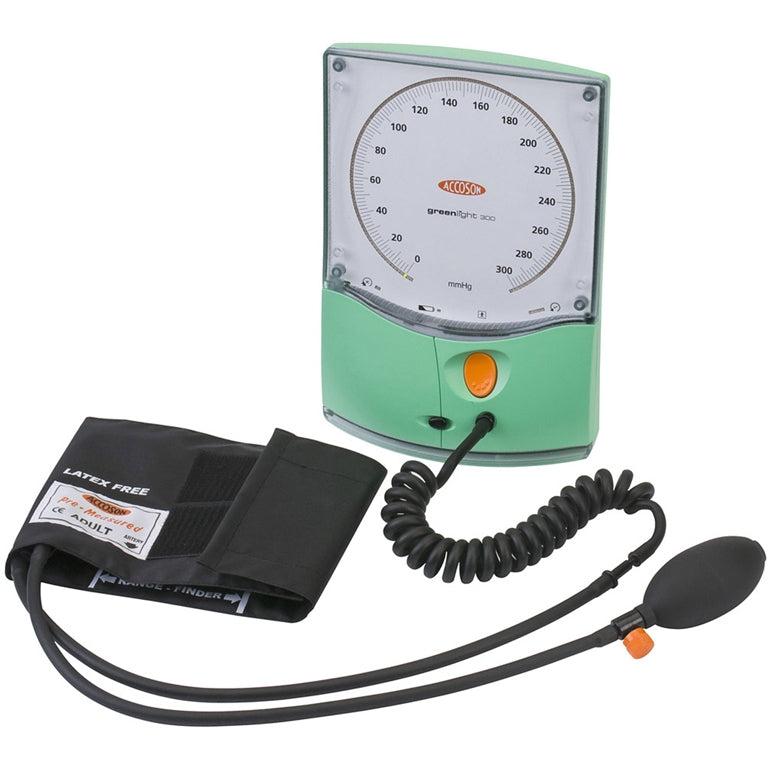
£268.78 GBP inc. VAT
Gauge Only - Cuffs Not Included
The greenlight 300 model is engineered to offer a dependable and precise alternative to the traditional mercury sphygmomanometer.
Developed in the UK specifically for the NHS, this project was a collaborative effort between Freeman Hospital, University of Newcastle, and A C Cossor & Son (Surgical) Ltd, earning a DTI award for Technology Transfer.
The greenlight 300 excels in its versatility, making it ideal for all patient groups, including pregnant women and the elderly, where mercury devices were previously used. The advantages include:
- Manual operation
- Displays in 2mmHg increments
- Offers better readability than mercury
- Calibrated to 0.4mmHg precision
- Automatically calibrates to zero upon activation
- Shows cuff deflation rate
- Compatible with any cuff size
No frequent calibration checks needed
According to the UK Medical Devices Directive, similar to most National Regulatory Bodies, measuring devices should be checked annually (aneroid devices every six months). The greenlight's specification ensures that, considering the worst-case tolerance of all components and environmental conditions, only 1 in 10,000 devices would require recalibration each year.
The greenlight 300 has been validated by the Mayo Clinic in the United States under the New International Protocol of the European Society of Hypertension, providing additional independent verification of its accuracy and effectiveness as a mercury instrument replacement. It is also marketed as a test reference manometer for verifying aneroid devices, further demonstrating its reliable precision.
Free Engraving Available!
Personalize Your Littmann Stethoscope with Free Engraving! Make It Uniquely Yours Today.
Use code 'FREE' at checkout.

